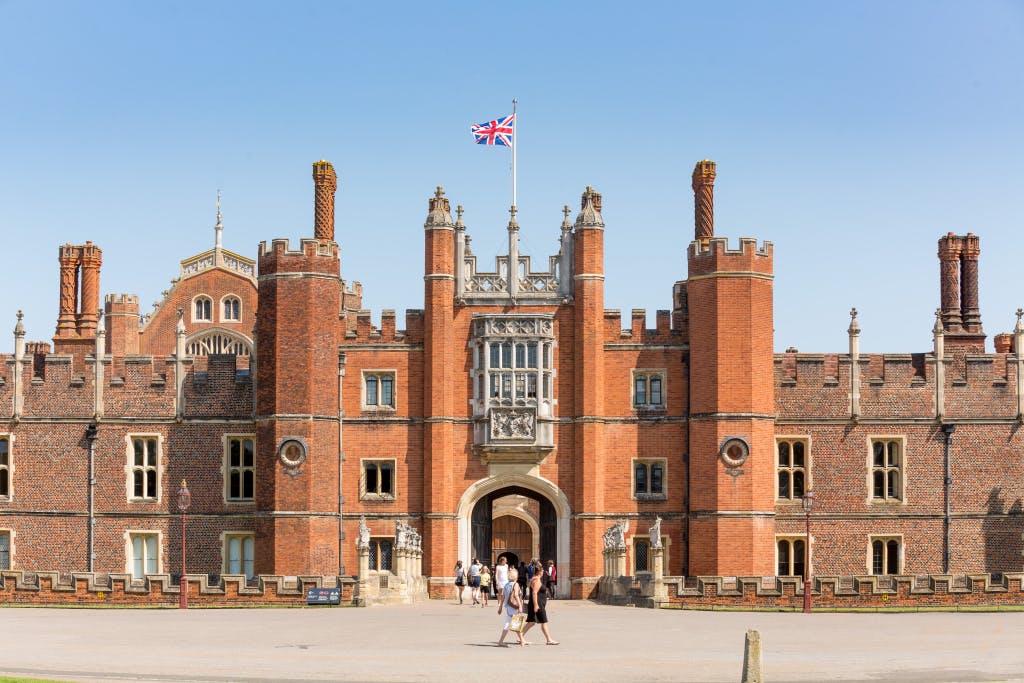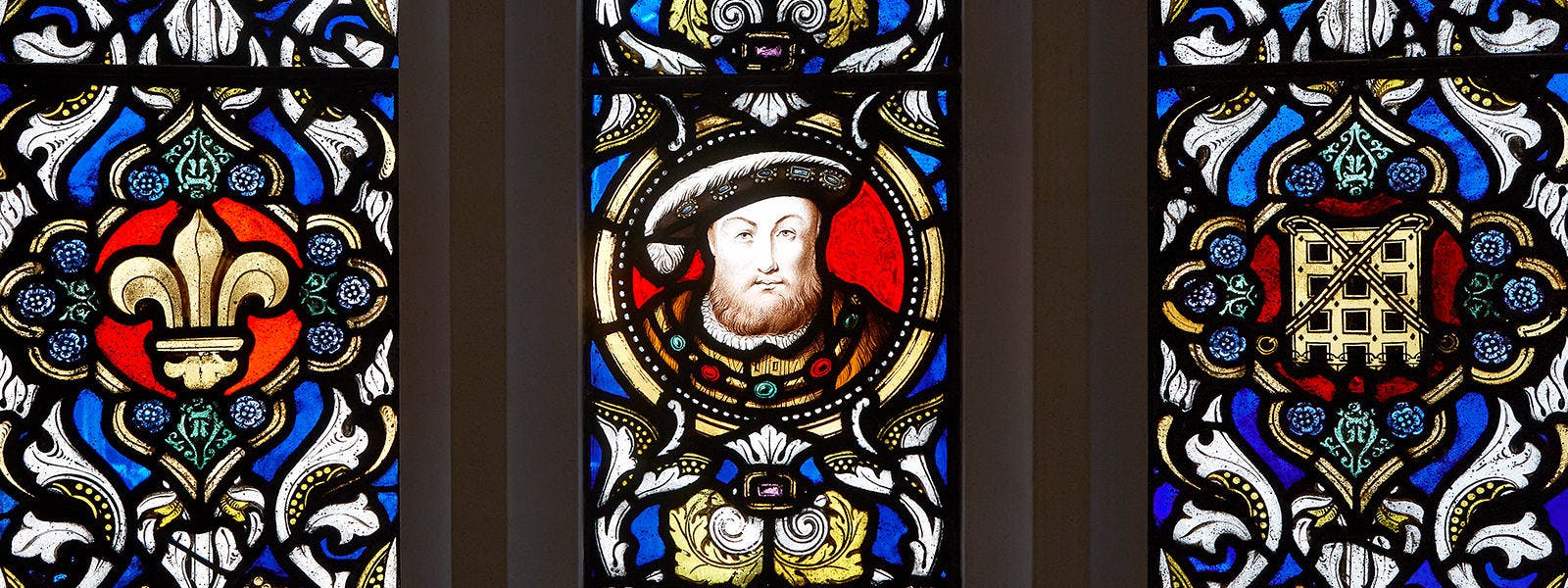
The place to see, and be seen
In the 1500s, a monarch’s home was the centre of the nation.
Wherever the monarch resided, he or she would be surrounded by the court. These were people of high rank and their servants.
Under the Tudors, Hampton Court Palace was a seat of government, a pleasure palace and a hotel. Here the big decisions were made; where you could seek favour and patronage, but also enjoy yourself in fine style.
The 'in' crowd
People of high social standing were expected to attend court and participate as courtiers. Maintaining a position at court was an expensive business, but the rewards were high if you remained among the monarch’s favourites. However, being Tudor courtier was not always easy, particularly under Henry VIII, who as an older man was notoriously easy to enrage.
The King’s household, the royal court was the political and cultural centre of the nation, and despite the risks, anyone who was anyone wanted to be there. At court, patronage and favour was given to those who pleased the monarch, and taken away from those who did not.
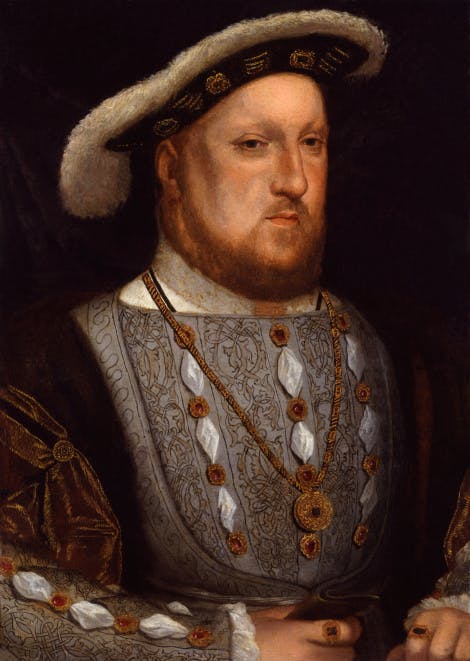
Power palace
Henry VIII had over 60 homes, but Hampton Court was his favourite palace. Once he had taken it from Cardinal Wolsey, the King transformed it still further to demonstrate his power and magnificence.
Before the days of regular parliament and constitutional monarchy, the national administration and treasury were functions of court and the royal household.
Henry VIII also knew that the palace design had to work practically to feed, accommodate and entertain his vast court of aristocrats and their servants.
The long chains of rooms in the palace, each with a guard on the door, were designed to prevent all but the most important gaining access to the monarch’s private spaces. A courtier’s clothes played a vital role in the guards’ decision: the smarter you looked the closer you got to the King!
Image: © National Portrait Gallery, London
Court on the move
The royal family and the court moved around the country, visiting Henry’s grand houses and palaces for a few months, sometimes even a few hours.
When the King left Hampton Court he often used the river Thames to get up to London.
He and his queen would travel in the royal barge, surrounded by smaller boats with their closest servants on board carrying clothes and personal possessions.
Courtiers would be expected to pack up and follow the royals on horseback, accompanied by their own servants.
A constantly shifting court was necessary; to allow the palaces to be cleaned and human waste removed, and to let surrounding land and livestock to be replenished after supplying the voracious demands of the royal court.
Did you know?
No one was allowed to leave court without permission from the monarch.

Puzzle palace
Henry’s palaces were designed to restrict access to the King and to channel people to the spaces appropriate to their rank.
Hampton Court is still the biggest and best surviving example of this type of royal filtering system.
Courtiers entering the Great Gatehouse to join Henry’s court would enter the first courtyard, Base Court. This was an ‘arrivals’ area, with guest lodgings on three sides.
As many as 1,000 courtiers and their servants would cram into Hampton Court; the courtyards full of milling crowds intent on business and pleasure (and furthering their own careers).
Image: Base Court, the 'arrivals area' for Henry VIII's courtiers in the 16th century. © Historic Royal Palaces
Dressed for success
Generally speaking, the more important you were, the more doors were opened for you. The long chain of rooms in the palace acted like a filter.
The guards at each successive doorway prevented the ‘unworthy’ from penetrating the monarch’s private rooms. However, if you dressed the part, you were more likely to be allowed through into the next level. So it made sense to dress as expensively as possible.
Did you know?
In Tudor times, a black suit for court cost as much as a year’s rent on a London house!

Exclusive access
A visitor of high rank would expect to pass through the Great Hall into the more exclusive rooms beyond. The sequence of rooms included a Guard Chamber, a Privy or Audience Chamber where the king or queen sat beneath a Canopy of Estate to receive visitors.
Image: This reconstruction imagines the way the Great Watching Chamber, the first room beyond the Great Hall, may have appeared in the 1500s. Guards control the entrance; those allowed through are richly dressed.
Take a look around the Great Watching Chamber on our 360-degree image, created in partnership with Google Arts & Culture.
The inner sanctum
The monarch’s most private and heavily guarded rooms lay beyond the grandest of the public rooms. This inner sanctum included an eating room, an inner Privy Chamber, a Withdrawing Room and finally a bedchamber.
Favoured courtiers would be invited to the Withdrawing room. Only they were allowed to see the monarch in a less formal setting, perhaps to play games, listen to music or enjoy conversation.
Did you know?
Henry VIII was serious about music at court. By 1547 he had over 60 musicians on his payroll.

Behind closed doors
In contrast to the milling crowds of courtiers and servants that thronged the outer courtyards and Great Hall, the King would be at the heart of the palace, hidden from all but the highest status courtiers and important servants.
Like a spider, he sat at the centre of a giant web. To enter his private apartments was like entering another world.
As a mid-to low ranking courtier, you might never actually see the King, or you might catch a glimpse as he moved through his state apartments to a service in the Chapel Royal or an important meeting in the Council Chamber guarded by his closest advisors.
Image: Detail of King Henry VIII seated, reading, in his bed-chamber, © The British Library Board
Jobs for the boys
Political power was concentrated among the men who attended to the King’s needs in the magnificence of the inner Privy Chamber.
They enjoyed intimate access to the King, washing and dressing him, even attending to him on the close-stool (lavatory).
Did you know?
The male courtiers who worked here were some of the most important men in the land.

Where were the women at court?
Those appointed to high positions in the royal household, and those closest to the king, were male. Depending on their social status, female courtiers worked in the queen’s household, for example as ladies-in-waiting, or woman of the bedchamber.
As part of court ‘business’, fathers from the most powerful families in the land sought positions for their unmarried daughters. It was an ideal place for them to meet a wealthy husband and make alliances between families, and while the rewards were high, so were the risks.
These young women were sometimes formally educated, but it was their social skills that put them most in demand at court entertainments such as dances and masques. Here, they might net an even bigger, if more treacherous, prize.
Image: Anne Boleyn, who met the King at court and became his second wife, National Portrait Gallery, London.
Fatal attraction
Anne Boleyn was a lady-in-waiting to the King's first wife, Katherine of Aragon when she first caught Henry VIII’s eye in 1526. Anne was executed for treason in 1536.
Teenager Catherine Howard, Henry’s fifth queen was maid of honour to his fourth wife, Anne of Cleves when she met the King. She was beheaded for adultery in 1542.
Image: A dangerous romance: Henry VIII meets Anne Boleyn at court in this imaginary scene, Royal Collection Trust/© Her Majesty Queen Elizabeth II 2017
Order in court
To manage so many people at court required huge organisation. Two departments controlled most of the functions at the palace. The Lord Chamberlain’s department was responsible for the running of the staterooms, where important people gathered and business was conducted. The Lord Steward’s department looked after the ‘below stairs’ areas of the palace such as the kitchens.
A strict set of rules, the ‘Eltham Ordinances', (a series of regulations drawn up for the royal household in 1526) governed behaviour and conduct at court. In addition, guidelines known as ‘Bouche of Court’ outlined what a courtier could expect to receive when attending the King. Each courtier was entitled to free food and lodgings of varying degrees of luxury, as an expression of the monarch’s wealth and magnificence. A ration of candles, wine and beer were also provided free.
Room with a loo
Courtiers were allocated lodgings according to status and these varied in quality and size.
Thirty of the most pleasant guest suites for important visitors were in Base Court.
They were an innovative piece of construction, with ‘ensuite’ toilets and chimneys hidden neatly within the footprint of the buildings, rather than being stuck on at the back.
Take a look around the Base Court on our 360-degree image, created in partnership with Google Arts & Culture.

A game of thrones
Of course, if you weren’t important, your lodgings at court were not as posh. And if you were a servant, you had to sleep where you could, in and around the vast complex of kitchens on the north side of the palace.
Henry VIII did build a toilet block though, for lower ranks of courtiers. Known as the Great House of Easement, it once stood by the river, in the building to the right of the Main Gatehouse. It could sit up to 14 people at a time!
The King had the most luxurious loo of all, similar to this close stool from the time of William III (r1689-1702). Henry’s close stools were covered in sheepskin, black velvet and ribbons!
Lower ranking courtiers used the common ‘jakes’ (communal loo) or a ‘piss pot’ in their apartments.
Image: William III's toilet. Royal Collection Trust/© Her Majesty Queen Elizabeth II 2017
Clean living
With hundreds of people crammed into the palace, personal cleanliness was of high importance.
Contrary to popular belief, Tudors washed their bodies, if not their outer garments frequently.
The King himself had his own bath, with hot and cold running water, and a luxurious tiled bathroom into which he sometimes took steam baths, the air perfumed with fragrant herbs.
Tudor roses
Those of the highest ranks preferred to wash in rose-scented water, which may not have been as effective as the coarse soap, made mainly of tallow, used by lower classes.
Perfumed oils were popular at court, very useful to disguise any lingering body odours. They would be rubbed into hair, or into the fabric of clothes.

Dry clean only
A courtier’s richly decorated and expensive outer garments were not washed. Men and women wore a kind of linen smock, or undershirt next to their skins to absorb sweat and protect their finery.
The quality and quantity of these varied according to individual wealth (the King’s undershirt was of the finest linen, exquisitely embroidered).
Each courtier brought with them to court several changes of these linen smocks. These, along with all the bed linen, generated a huge amount of dirty laundry.
At Hampton Court, an army of women laboured daily in a laundry complex outside the main building, next to the river. Here they washed and mended linen, spreading the court’s sheets on the grass to dry. This was the only place that women were employed at the palace.
Image: The palace laundry at Hampton Court probably looked similar to this scene depicting 16th-century German laundresses, washing clothes in the river and spreading them to bleach and dry in the sun. How they coped in the English weather is unrecorded! © British Library Board

Dining at court
Higher ranks enjoyed better food and were served in the Great Watching Chamber. They ate freshly roasted meat and a wide choice of dishes.
Each meal consisted of two courses, brought up to the Great Hall in ‘messes’ to be shared between four diners. Food was generally the same each day, salted or cured meats with local vegetables, fresh fish and bread.
By contrast, the variety of food for the King and his family was staggering. The King, who dined alone, had his own French chef who prepared his food in a private kitchen.
Image: The Great Kitchens at Hampton Court Palace. © Historic Royal Palaces
The best of the rest
Several hundred servants were entitled to eat at court, but not given a dining place in the Great Hall.
They may have taken their meals in their own meagre lodgings or in the kitchens where they worked, lived and slept. However, they had a more comfortable existence than the average Tudor labourer, and they were fed, clothed and lodged by the court.

Please, sir...
This model of Hampton Court during one of the mass meal times, demonstrates the way the palace provide a lower class ‘canteen’ and ‘directors restaurant’ for differing status of courtier.
At the top left, the top ranking courtiers eat in the Great Watching Chamber, the ‘directors’ restaurant’. Next to that is the Great Hall – the ‘canteen’ for the mid-to-low ranking men.
At the bottom of the picture you can see cooks and servers at work in the Great Kitchens, and the various other smaller kitchens where specialised dishes were created.
Image: © Historic Royal Palaces

That’s entertainment
Hampton Court was Henry VIII’s pleasure palace, which he turned into a fabulous centre of entertaining with feasting, jousting and hunting.
Jousting was the most prestigious sport in Tudor England. Henry had a huge tiltyard, the equivalent of a modern-day sports stadium, built at Hampton Court. As a young man, the King was fearless, and he and his closest courtiers would enjoy competing with each other, while the ladies of the court looked on.
As a young, fit man Henry was famously sports-mad, as were many of highest ranking courtiers, among them his close friends. The King and his favourite courtiers would escape royal duties take off for a day’s hunting, or distract themselves with hawking, or by playing tennis. Gambling was also popular; the King thought nothing of losing hundreds of pounds to his courtiers by betting on tennis matches and dice.
Image: Mounted knight in tournament armour, possibly Henry VIII, © British Library Board.

Music and masque
Music and musicians constantly filled Tudor palaces, particularly at the pleasure palace of Hampton Court.
Dancing and masque were also key entertainments that the King and his court enjoyed. Henry himself was a talented composer and performer, and being able to play an instrument or sing was considered a very desirable attribute for a courtier.
Image: Detail from the Romance tapestry, Royal Collection Trust / © Her Majesty Queen Elizabeth II 2017.
The end of the spend
Henry’s daughter Elizabeth I (r1559-1603), the other great Tudor monarch, continued the magnificence and ceremony of court life. Like her father, she used the complex filtering system to shield her from the mass of courtiers.
Life changed with the arrival of the Stuarts: James I held a far more public court so his private life was visible to a great number of people. His son Charles I spent hugely, the Civil War and the following Commonwealth did away with the all the ‘trappings of monarchy’, including the royal court.
By the time of the Restoration, the cost of feeding the whole of the royal court was prohibitive. Charles II (r1660-85) abolished the privilege for all but the grandest. Courtiers then had to make their own arrangements.
Life at court changed slowly over the centuries, becoming increasingly elaborate and formal but always remaining magnificent. Finally, the royal court left for good, and new grace and favour inhabitants took their place.
Image: Elizabeth I. National Portrait Gallery, London
Discover more Tudor history

Explore Henry VIII's Tudor Palace
Virtual Tour
Discover more about Hampton Court Palace during the reign of Henry VIII with our interactive story, created in partnership with Google Arts & Culture.

Test your Tudor knowledge
Download the Royal History Quiz App
How much do you think you know about one of the most famous, and fascinating, dynasties in English history? Take the Tudor challenge and find out!
BROWSE MORE HISTORY AND STORIES
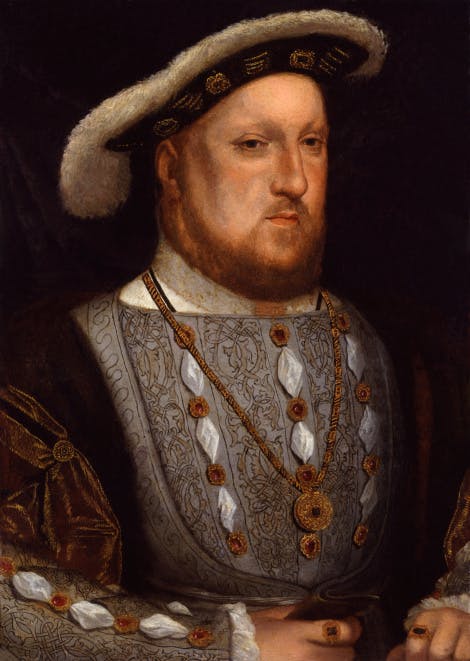
Henry VIII, Terrible Tudor?
Who was the real Henry VIII?
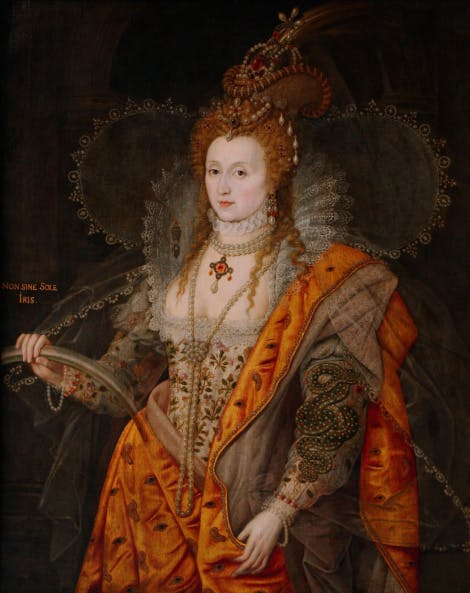
Elizabeth I
From Tower prisoner to English Queen
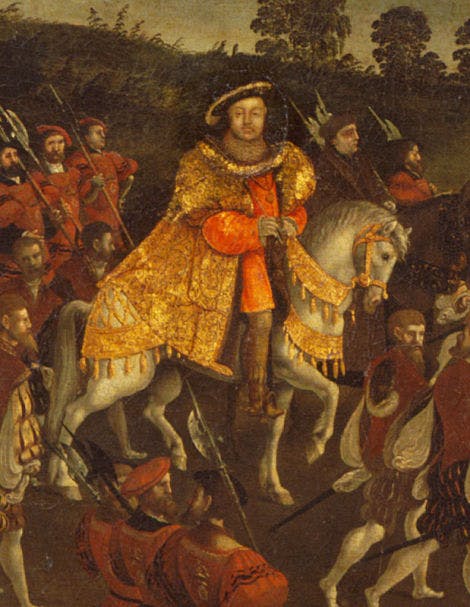
The Field of Cloth of Gold
Henry VIII's historic meeting with his great rival François I in 1520 was a defining point in his reign
EXPLORE WHAT'S ON

- Things to see
Haunted Gallery and Processional Route
Walk Henry VIII’s route from his private apartments to the Chapel and see the infamous Haunted Gallery in the State Apartments.
- Open
- Hampton Court Palace
- Included in palace admission (members go free)

- Things to see
The Wilderness
Wander through this treasure of the Hampton Court Gardens, which was once Charles II's formal pleasure garden and is now a wild meadow.
- Open
- In line with palace opening hours
- Hampton Court Palace
- Included in palace admission (members go free)
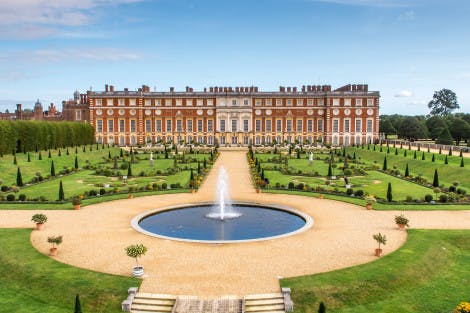
- Things to see
Hampton Court Gardens
Take time to explore and relax in these world-renowned gardens and find our free entry Garden Open Days dates.
- Open in line with palace opening hours.
- Hampton Court Palace
- Included in palace admission (members go free)
Shop online
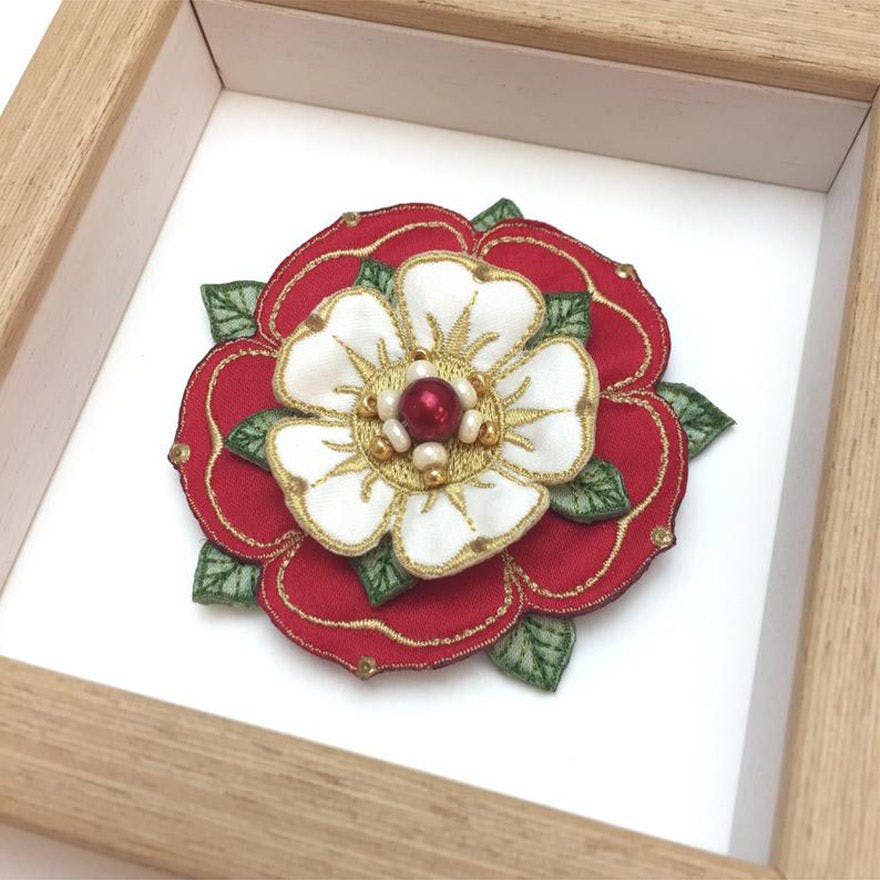
Shop Tudor gifts
Browse through our Tudor Collection to find a whole range of products based on the Tudors.
From £3.00
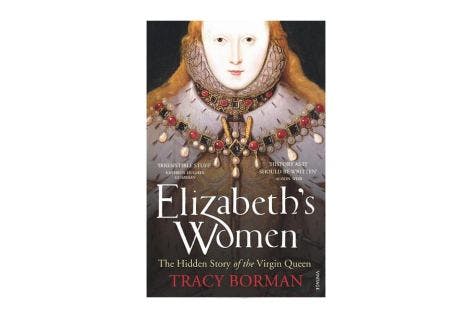
Elizabeth's Women by Tracy Borman
Discover the world of Elizabeth I with this insightful look at Elizabeth's relationship with woman and how they helped to shape her into a remarkable monarch. This thrilling book explores the lesser known side of Elizabeth I who is often portrayed as a ruthless 'man's woman'.
£16.99
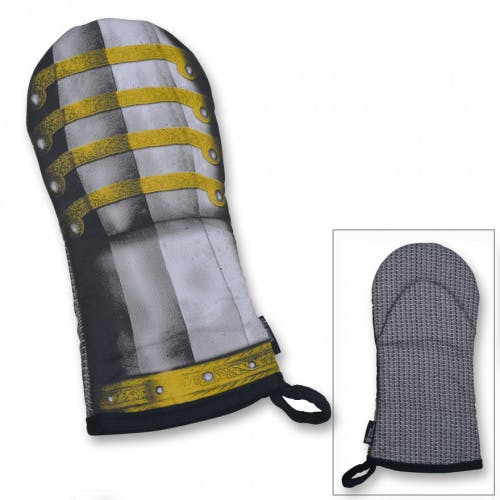
Henry VIII gauntlet armour oven glove
This fun oven glove has been inspired by a suit of armour made for Henry VIII in 1540, which is on display at the Tower of London.
£18.00

